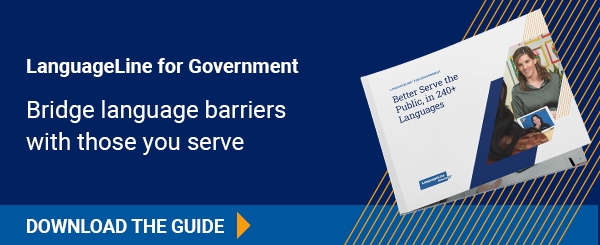
Ensuring that all students and their families have access to crucial information and resources is especially difficult in diverse school districts.
Title III of the Elementary and Secondary Education Act (ESEA), alongside Title I, plays a significant role in providing support to English learners (ELs) and their families. Let’s dive into the requirements and practical applications of Title III and Title I funds for translation and interpretation services.
(These regulations are outlined in the U.S. Department of Education's guidelines for Student Achievement and School Accountability Programs.)
Overview of Key Legislation
Title VI of the Civil Rights Act of 1964
Title VI prohibits discrimination based on race, color, or national origin in programs receiving federal financial assistance. This includes ensuring that non-English speaking parents receive school-related information in a language they understand.
Title III, Part A of the ESEA
The primary purpose of Title III is to help Limited English Proficient (LEP) students attain English proficiency and achieve state academic standards. This involves funding programs that provide language instruction and related services.
Title I, Part A of the ESEA
Title I aims to help academically at-risk students meet state academic standards. While primarily focused on academic support, it also includes provisions for communicating with non-English speaking parents to ensure they have access to necessary information.
Back to the Basics: Defining Translation and Interpretation
Both of these services are essential for ensuring that LEP students and their parents can fully participate in the educational process.
Translation is the process of converting written text from one language to another.
Interpretation is the process of converting spoken language from one language to another.
Ensuring Equal Access for EL Students and Parents is a Legal Obligation
School districts must communicate with LEP parents in a language they understand without charging them for these services. This ensures meaningful access to the same information that English-speaking parents receive.
Use of Title III and Title I Funds
Funds from Title III and Title I can be used for translation and interpretation services, provided they are:
Necessary and Reasonable: For the efficient performance and administration of the program.
Supplementary: Must supplement, non-federal funds.
Specific Examples of Fund Usage
Title III Funds: These can be used for translating parental notifications, postage for mailing notices, and personnel costs for meetings with families. They cannot be used for services that are already provided for all students or are required by other laws.
Title I Funds: Similar to Title III, Title I funds can be used for specific communication needs related to Title I requirements, ensuring these are in a language parents can understand.
Supplement, Not Supplant Rule
Both Title I and Title III funds must be used to add to (supplement) existing services and not replace (supplant) them. This ensures that federal funds enhance educational opportunities without replacing state or local funding.
Practical Applications and Examples
Parental/Guardian Notifications: Schools must notify parents of EL students about their child's language proficiency and educational program details in a language they can understand. This includes annual notifications and information on parental rights.
Community and Family Engagement: School districts can use Title III funds for community participation programs, family literacy services, and parent outreach to help LEP children and their families engage in the educational process.
Support for Immigrant Students: Title III also supports immigrant children and youth activities, such as mentoring, academic counseling, and comprehensive community services.
How can LanguageLine Help?
While partnering with LanguageLine, you get 360 degrees of language access support with experts in education and legislation to ensure your school district complies with current laws. They can guide you to understand practical considerations from awareness of language needs to identify any missing gaps in the content you might be overseeing.
Effective communication with English learners and their families is crucial for academic success and school-community integration. By adhering to the guidelines and utilizing funds appropriately, schools can foster an inclusive environment that supports the educational achievements of all students.
From interpretation to translation to language proficiency training for bilingual staff, LanguageLine has you covered.
For more details on how LanguageLine can help your school district with your multilingual communication needs, please contact your Business Development Manager or email us at translation@languageline.com
Need more specific resources? Check the Department of Education's website here.





